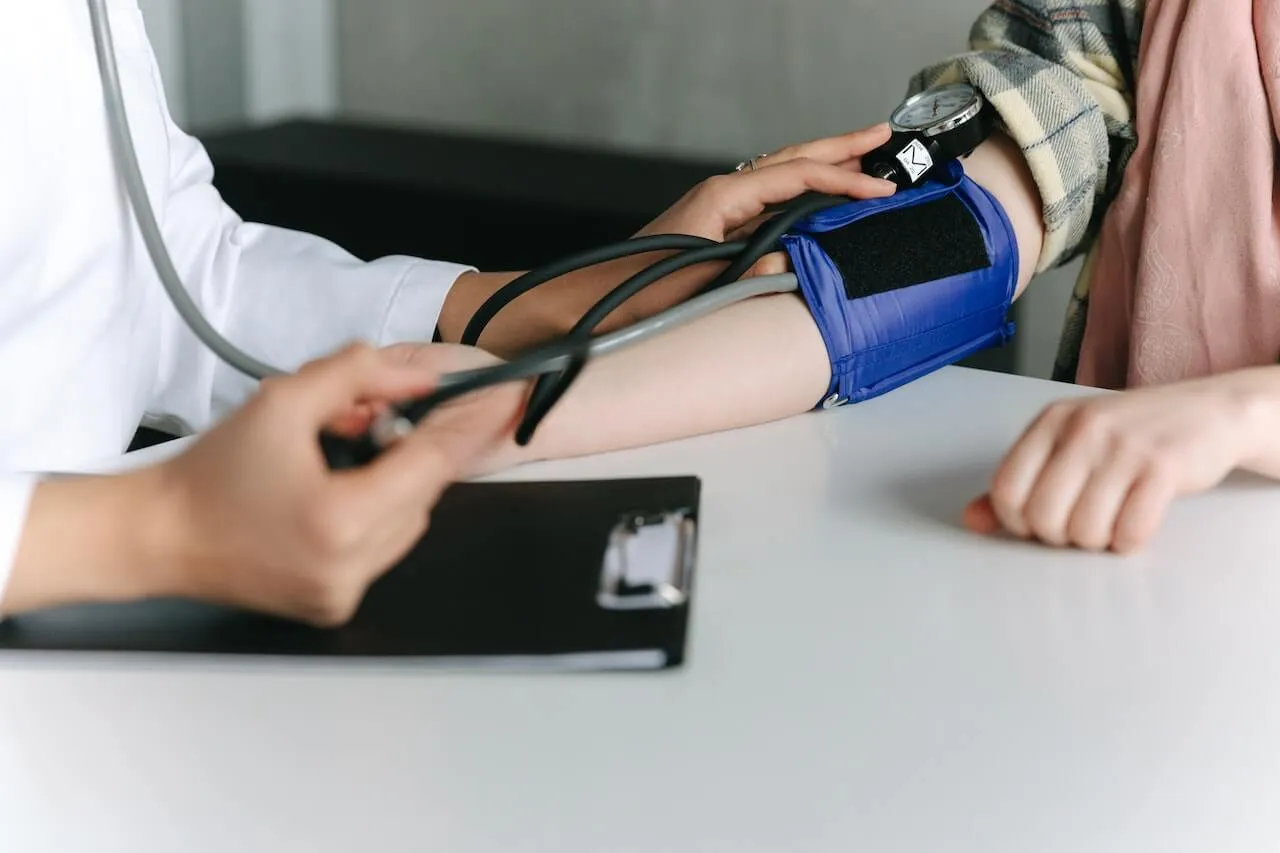Key Takeaways
- Diabetes can lead to life-threatening complications and should never be left uncontrolled.
- By working closely with your doctor and making healthy lifestyle changes, you can prevent serious conditions like cardiovascular disease, kidney disease, and vision loss.
{{mid-cta}}
In the last twenty years, the rate of US adults with diabetes has more than doubled. According to the Centers for Disease Control and Prevention (CDC) approximately 38 million people have diabetes, but a scarier statistic is that 1 in 5 people don’t even know they have it. There are two types of diabetes, type 1 diabetes and type 2 diabetes, with the latter making up about 90% of all cases. The good news is type 2 diabetes can typically be managed through lifestyle changes like diet and physical activity, as well as oral medication.1
But what happens when diabetes goes untreated? Despite it being a common condition, diabetes is a serious health concern. If left untreated, diabetes can lead to heart disease, kidney disease, nerve damage, and vision loss. In this article, we’ll unpack the complications associated with uncontrolled diabetes and how to prevent it.
How Uncontrolled Diabetes Affects the Body
Diabetes is a condition that occurs when your blood glucose levels (or blood sugar) get too high. While glucose helps provide our body with energy, it’s not meant to stay in our blood vessels at high concentrations for long periods. In healthy individuals, when blood sugar rises, the pancreas pumps out insulin, shuttling the glucose molecules out of the blood and into cells where they can be utilized. Insulin acts similarly to a key that unlocks the cells and lets glucose inside.
In people living with diabetes, the pancreas doesn’t produce enough insulin, or the body can’t use insulin properly. Therefore, glucose molecules cannot enter cells as they typically would. Instead, they stay in the blood, which can lead to a myriad of serious health problems.
Untreated Diabetes Symptoms

Diabetes symptoms can range from mild to severe and often go overlooked. It’s important to talk to your healthcare provider if you experience any of the following symptoms as they may be a sign of prediabetes or diabetes:
- Increased thirst
- Frequent urination
- Increased hunger
- Unintended weight loss
- Fatigue
- Blurred vision
- Slow-healing sores
Untreated Diabetes Health Complications
Having diabetes puts you at an increased risk for many serious complications. Let’s unpack the physiology of how diabetes can lead to other conditions.
When blood sugar levels are abnormally high (also called hyperglycemia) for extended periods, they can cause damage to blood vessel walls. High blood sugar reduces the elasticity of arteries, impairing their ability to relax and causing vascular stiffness, which leads to high blood pressure (also known as hypertension). This deterioration of the blood vessels has a negative rippling effect throughout the entire body and may result in the following complications:2
- Heart Disease: Diabetes increases your risk of developing high blood pressure and high cholesterol, both of which can lead to cardiovascular disease.
- Kidney Disease: High blood sugar levels from diabetes can cause kidney damage and prevent them from properly filtering out waste. This can eventually lead to chronic kidney disease.3
- Vision Loss: Diabetes can injure small blood vessels in an area of the eye called the retina. This leads to blurry vision and may ultimately result in loss of vision.4
- Nerve Damage: High blood sugar may also lead to nerve damage or diabetic retinopathy. There are various types of nerve damage, with peripheral being the most common in people with diabetes. Symptoms of peripheral nerve damage include tingling, loss of feeling, weakness, or pain in different parts of your body, like your hands and feet.5
- Infections: Diabetes can weaken your immune system and make it less effective. At the same time, damage to blood vessels and nerves may cause small cuts, sores, or ulcers to be overlooked. Even a small cut can result in a skin infection with these combined complications. When an infection cannot be controlled, amputation may be necessary.6
<div class="pro-tip"><strong>Also Read: </strong><a href=blood-sugar-high-blood-pressure>Maintaining Stable Blood Sugar Can Help Reduce the Risk of High Blood Pressure</a></a>.</div>
How to Prevent Diabetes Complications

Diabetes is a serious health condition; however, by working closely with your healthcare provider and following the recommended treatment plan, you can avoid developing more serious complications. Follow these tips below to help optimize your blood sugar and keep your diabetes in check:
- Focus on Low-Carbohydrate, High-Fiber Foods: High-fiber foods like veggies will help slow digestion and prevent blood sugar spikes.
- Maintain a Healthy Weight: Overweight and obesity are risk factors for diabetes and also exacerbate diabetes complications. Work with a professional to help you reach and maintain your weight loss goals.
- Exercise Regularly: Physical activity reduces blood sugar spikes in the short term and can improve insulin sensitivity in the long term.
- Monitor Your Blood Sugar: Try using a glucose monitor to stay on top of your blood sugar levels in real-time.
- Take Your Medications: If you’ve been prescribed diabetes medications, make sure you are taking them as your doctor advised. Talk to your doctor regularly about your symptoms to see if your dose needs to be adjusted.
The Bottom Line
Diabetes can lead to life-threatening complications and should never be left uncontrolled. By working closely with your doctor and making healthy lifestyle changes, you can prevent serious conditions like cardiovascular disease, kidney disease, and vision loss.
Using a CGM with Signos: Real-Time Data, Backed by AI
Signos pairs a real-time glucose biosensor with AI trained on tens of millions of data points to deliver personalized, science-backed guidance. See exactly how your body responds, and take action.
Learn how it works. Ready to get started? Join now.
<div class="pro-tip"><strong>Learn More: </strong><a href=pcos-and-diabetes>PCOS & Diabetes: Link, Treatments, and When Get Tested</a>.</div>
Topics discussed in this article:
References
- https://www.cdc.gov/diabetes/about/index.html#cdc_disease_basics_quick_facts_callout_callout-diabetes-by-the-numbers
- Naha, S., Gardner, M.J., Khangura, D., et al. (2021, August 7). Hypertension in diabetes. Endotext - NCBI Bookshelf. https://www.ncbi.nlm.nih.gov/books/NBK279027/
- https://www.cdc.gov/diabetes/diabetes-complications/diabetes-and-chronic-kidney-disease.html#cdc_generic_section_2-how-diabetes-causes-ckd
- https://www.cdc.gov/diabetes/diabetes-complications/diabetes-and-vision-loss.html
- https://www.cdc.gov/diabetes/diabetes-complications/diabetes-and-nerve-damage.html
- https://www.cdc.gov/diabetes/diabetes-complications/diabetes-immune-system.html#:~:text=How%20diabetes%20affects%20your%20immune,Skin%20infections




.svg)










.svg)
.svg)
.svg)
.svg)
.svg)
.svg)
.svg)
